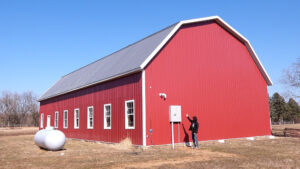
Kitchen Island, Barn Power – March 2024 Update
Welcome to my shop! This is a quick update to let you know what I’ve been up to. This big chunky thing is the leg
I’ve recently gotten a lot of questions about carbide blades; how much do they cost, are they worth it, etc. So I figured I’d give you those answers!
Some background: I built my saw seven years ago, and I bought the standard carbon steel blades. I used those for about three or four years.
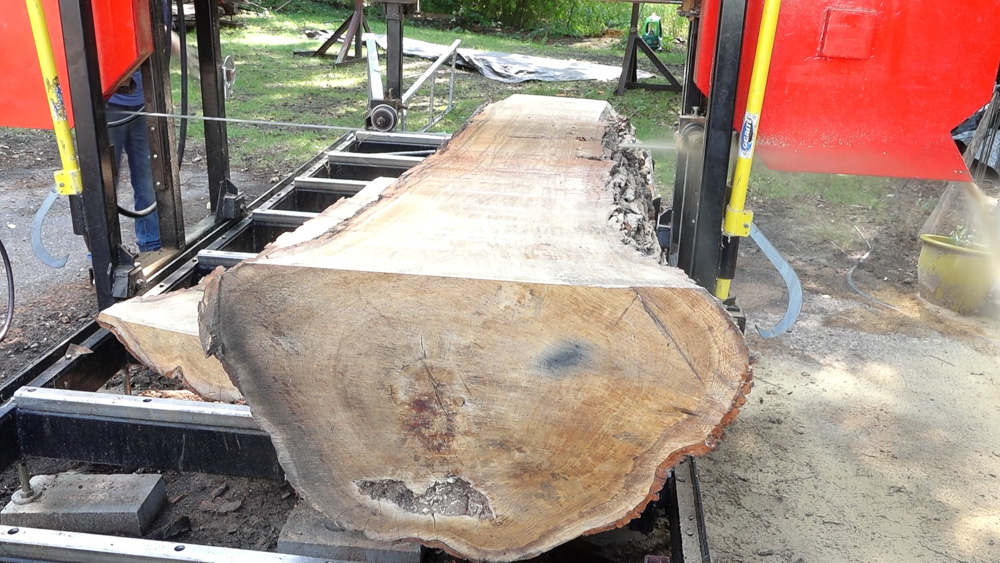
Then, in the summer of 2020, I bought some bimetal bandsaw blades and tried those out. I found that I liked them a lot better, and they lasted longer than the standard carbon blades. They are basically a carbon steel backing with a harder material welded onto the front for the teeth.
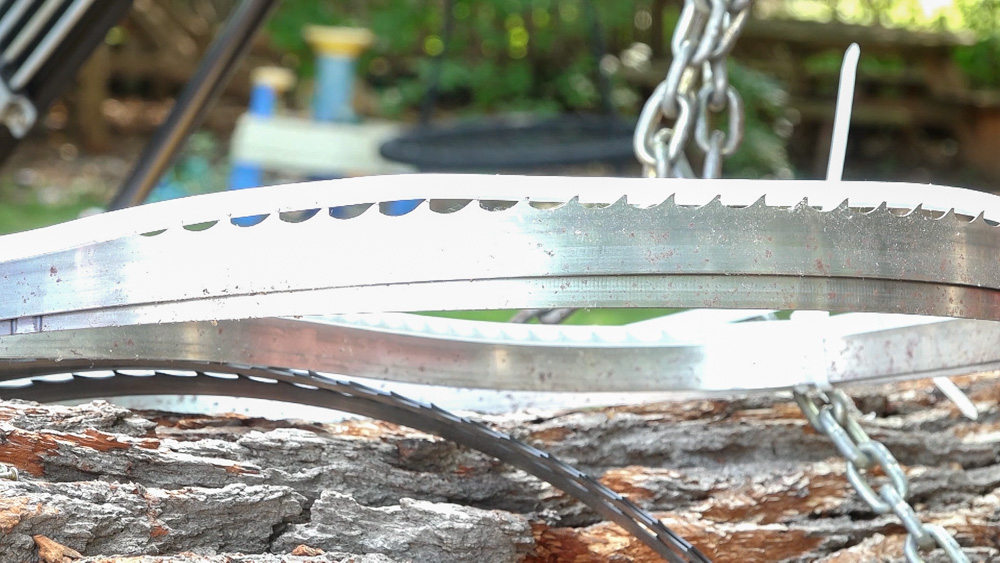
At that time, I also bought a single carbide blade to try it out. I put it on my sawmill in the fall of 2020, and those are the only blades that I have used since, and they’re the only blades that I have any interest in using anymore.
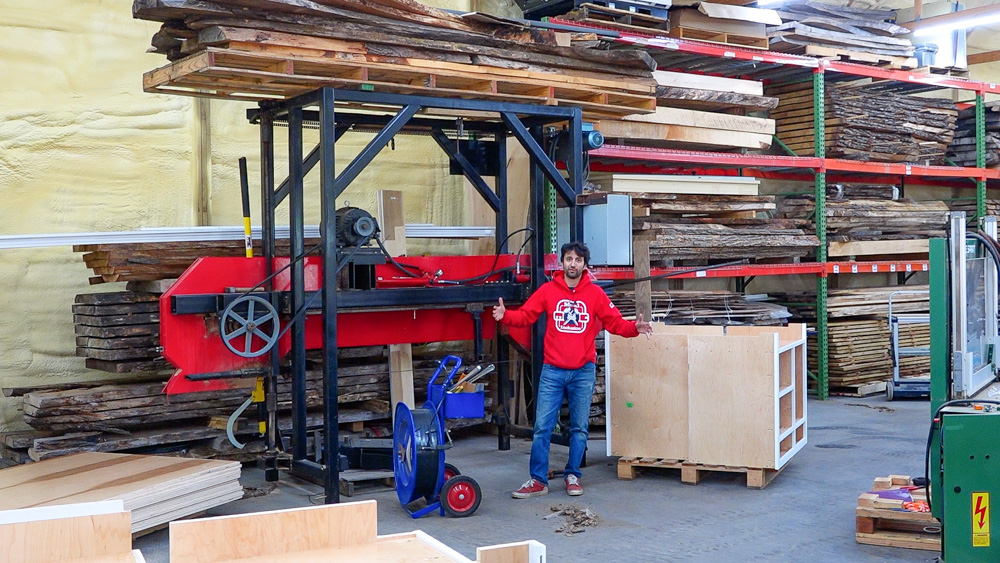
You likely know that I like to cut big, urban wood, and that presents two challenges. The bigger challenge is the overall size and scale of the log. For the saw to make those cuts effectively, the blades need to be spot-on, perfect, amazing.
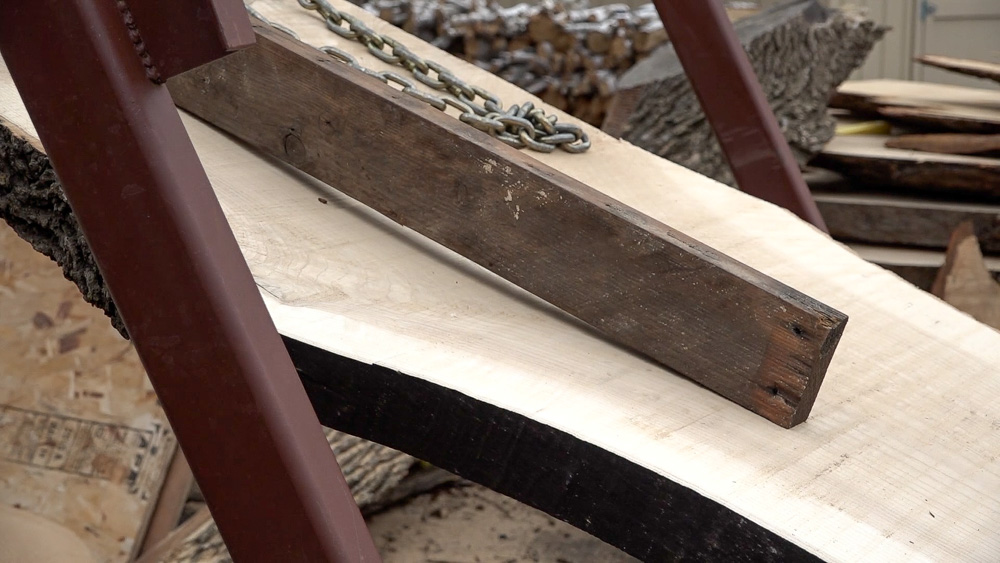
I found that when I was using the standard cheap carbon steel blades, if I left the blade on for more than one log, the blade would start to dull and wander as I was processing the second log. It got to the point where I would put a brand new blade on every time I was going to cut a sizable log.
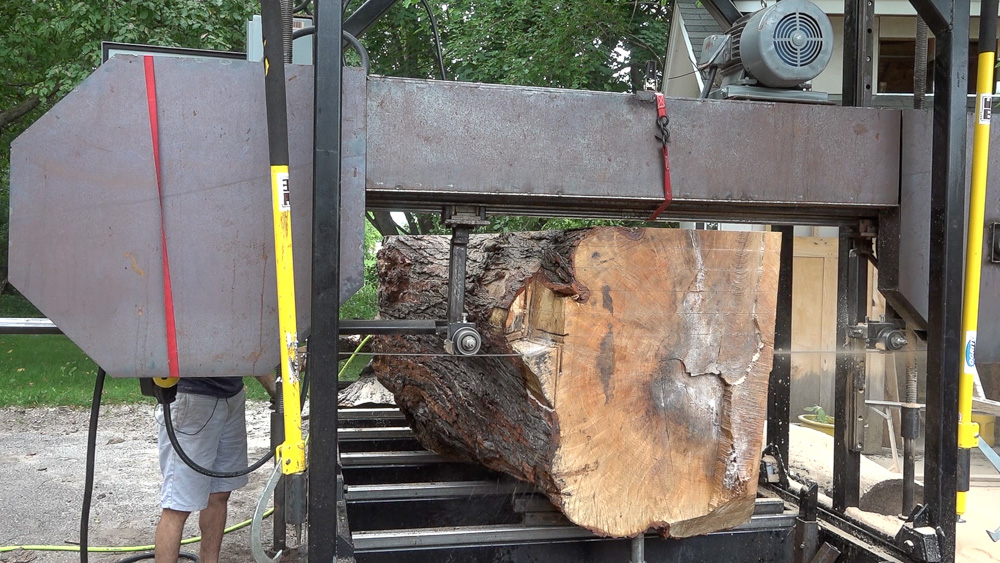
The second challenge, which is as big of a deal as most people think it is, is the embedded steel and metal. Most of the time the embedded metal I find in trees is so small and insignificant that it has no impact on the blades whatsoever. People also frequently assume that urban wood has a lot of metal in it, but in my experience, it’s in about a quarter of the logs I cut.

I found that the carbide blades naturally excel at meeting both of those challenges. They can cut big stuff, and they can cut through steel and embedded metal without any problems whatsoever. Plus they keep cutting and cutting and cutting without their teeth getting dulled or the set changing when they hit metal. So overall, I think running the more expensive carbide blades is more valuable because you don’t have to deal with all of the BS of the other blades. Plus, cutting with the carbide blades is just more enjoyable because I don’t have to worry about the blade wandering or having issues with the cut because of the blade.
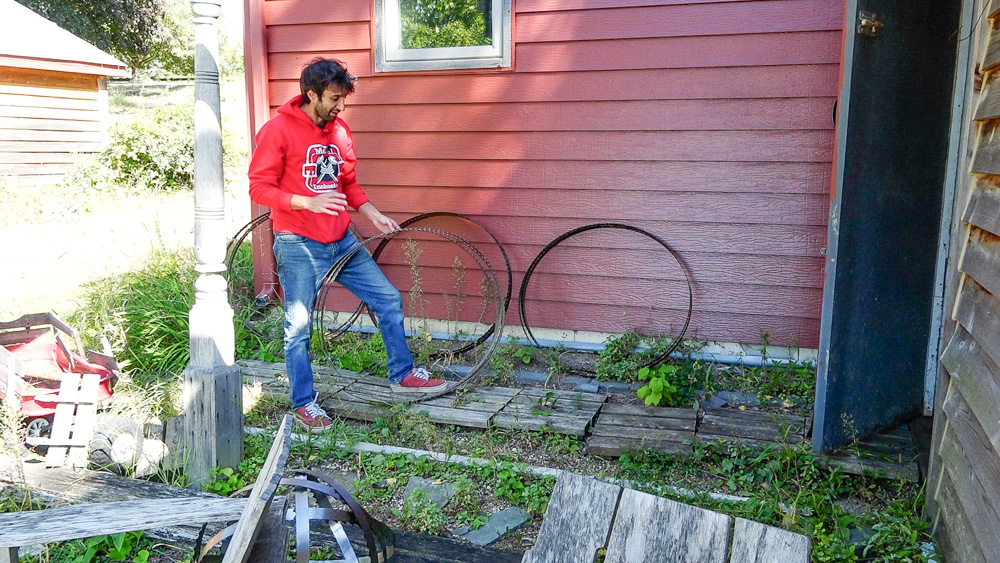
So, let’s run through the costs. My saw takes a 310 inch long blade, which is just under 26 feet. I run an inch and a half wide band, and the bands are anywhere from .045 to .055 inches thick. These run $160 a piece (at least, that’s what they cost when I bought my last set in 2020). In comparison, the standard carbon blades were $48 a piece, and the bimetal blades were $106 a piece. At first, it seemed like a huge jump in price, because the carbide blades are over three times the cost of a standard carbon blade, but they end up being cheaper in the long run. I have four dull ones behind me here, and that’s three years worth of cutting right there. Plus, I’m cutting more now than I did before I switched to carbide.

In comparison, here are some of the blades that I ran through before making the switch to carbide. There are probably about 20 more of these that I got rid of, as well. So it’s a very big difference in terms of number of blades that I’ve run through.
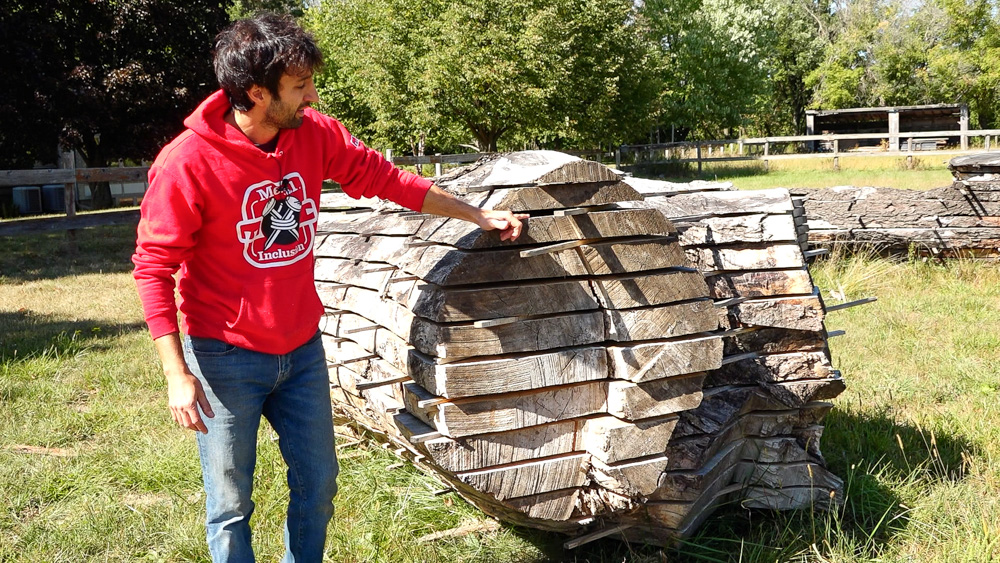
From a real world, real numbers kind of perspective on longevity: I recently changed my blade after making this cut on this log. So, that blade made every cut below this one on this log. After that, Chad and Colton were here, and we cut up their big walnut butt log with the same blade. They were here again for the giant walnut crotch log, and then here again for the putrid burl. I also sawed a crotch log with a giant burl, plus one more of their logs. So five of their logs total, all with the same blade, and it still isn’t showing any signs of wear. I will likely get another ten sizable logs out of that one blade.
As far as sharpening goes, you can sharpen all of these blades. WIth the carbide blades, you’re going to need a diamond wheel for your grinder. However, I have found that the carbide blades do not dull before the point where I have distressed them enough that they are not usable.
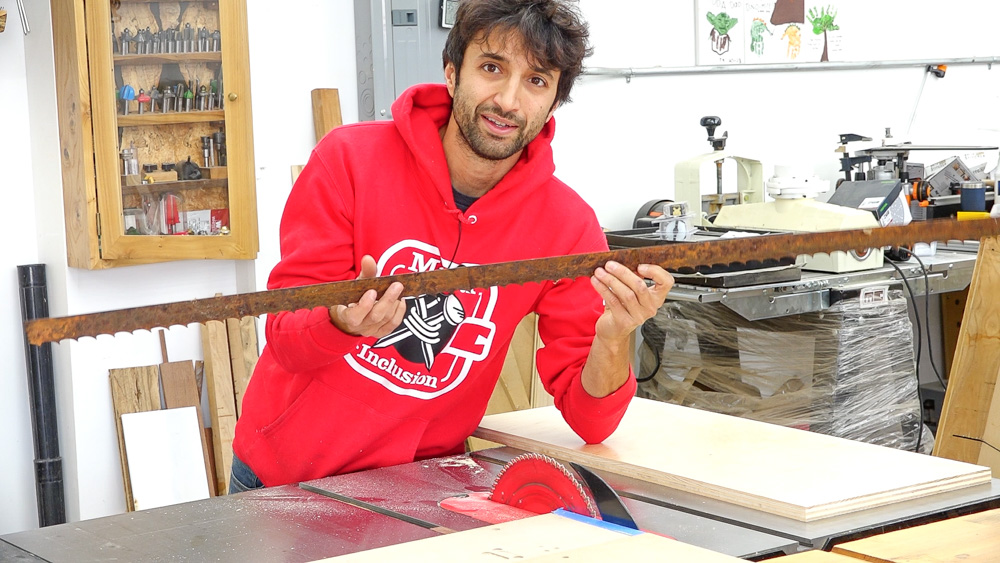
One of the biggest differences between the carbide blade and the standard ones is the way they clear the kerf. On a standard blade, the teeth are bent out to create the set on the blade, and the set creates a wider kerf than the body of the blade. People frequently ask if I am making the saw work harder by having all of the weight stacked on top of the blade while I’m cutting. In reality, it makes no difference, because the wood is never in contact with the body of the blade as it’s sawing. The teeth are actually cutting a wider channel than the thickness of the body of the blade so that it’s just kind of floating in the kerf.

But on a carbide blade, the teeth aren’t bent out to create a wider path, it’s the carbide that extends past the body that creates that bigger kerf. So one of the downsides to the carbide is that the blade will cut unevenly if those teeth get bent or warped or damaged on just one side.

Lastly, with the carbide blade, embedded metal has become a complete non-issue with me. Before, I might worry about a 20 penny sinker nail, but now this wouldn’t do anything to my blade.
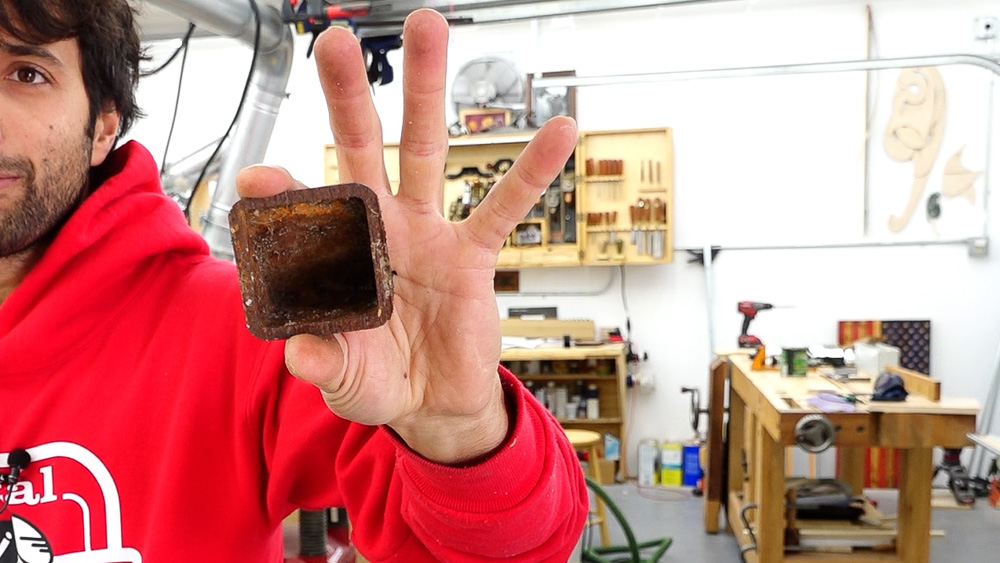
Now I can cut through stuff like this: the side stop off my saw, which is a 2×2 steel tube with a quarter inch wall thickness. I sliced that right off and the blade just kept cutting the log.
As far as suppliers go, I get my carbide blades from Wood-Mizer because I wasn’t able to find any other supplier that had an inch and a half carbide. If anyone knows of any other suppliers that carries an inch and half carbide, let me know!
Hopefully that answers all of your blade questions. Thank you as always for joining, I greatly appreciate it! If you have any questions or comments, please feel free to leave it in the comments. As always, I’d be happy to answer any questions you might have. Until next time, happy woodworking.


Welcome to my shop! This is a quick update to let you know what I’ve been up to. This big chunky thing is the leg

Welcome back to the home renovation. This time I’m going to be working on the kitchen island. Here is a small model of the island.
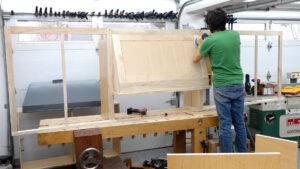
Welcome back to our home renovation. Today I am going to be working on this wall. It needs some upper cabinets and the surround for